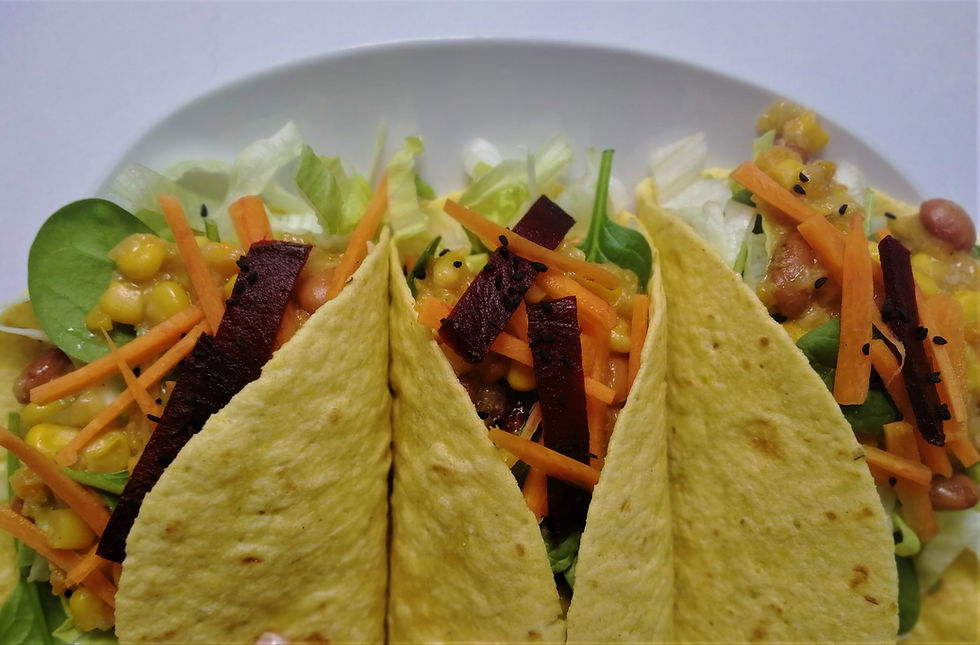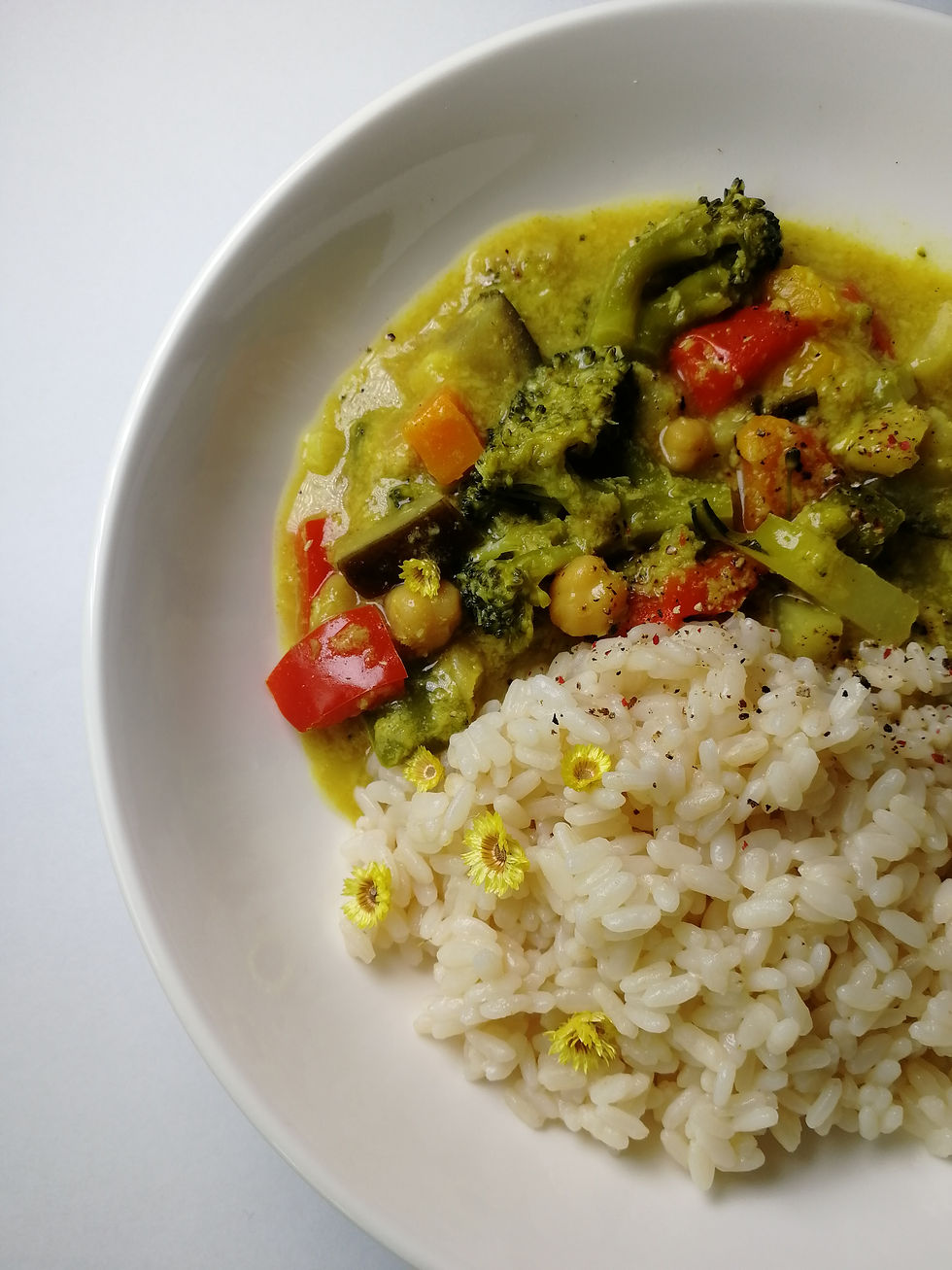Barley in company with greens, lentils, and asparagus
- Hungry Pumpkin

- Jun 5, 2019
- 7 min read
Updated: Feb 18, 2020
It's time for us to come out with our big secret: at Hungry Pumpkin we are BIG fans of different grain dishes. We’ll do buckwheat, millet, and expect to see quinoa, amaranth, and (of course) rice too. For today though, it's time to tackle barley.
To spice things up a bit we decided to add some asparagus; though the season for this iconic vegetable is coming to an end, we're here to fill your bellies with it, and to fill your minds with some information about it!

Despite what you may think, there are actually different kinds of asparagus. The one you are likely the most familiar with though is the cultivated grocery store variety, Asparagus officinalis. Along with this, several wild species exist, for example A. maritinus, A. acutifolius, and A. tenuifilius; unless you're planning to go foraging in nature rather than at the store though (a practice we only suggest for those VERY experienced with and certain of the plants in their regions, as well as versed in responsible foraging practices) then you just need to worry about the one type. Funnily enough, asparagus was formerly placed in the botanical family Liliaceae, which, as the name suggests, is the lily family. So those pretty lilies in your garden? Relatives! That being said, botanists and geneticists have since decided that it belongs in a separate (but closely related) family, the Asparagaceae.
What nutrients are in asparagus?
Asparagus is more than just another pretty face on the food scene. Besides being a great source of amusement for children wanting to sword fight with them at dinner tables around the globe, asparagus has a pretty impressive nutrient profile (en garde, fast foods!).
Considered a very low calorie food, 100g of asparagus contains 75.3kJ (18kcal) of which 30.5kJ (7.3kcal) comes from carbohydrates, 30.1kJ (7.2kcal) comes from proteins, and 14.7kJ (3.5kcal) comes from fats. Besides this, it also contains a number of important nutrients, including many minerals, vitamins, amino acids, antioxidants, and fibre.
Since asparagus is low in calories and high in nutrients, it means that the nutritional density is high. In other words, you're getting more nutrient per unit of calorie than in some other foods. With the exception of sodium (which, if you read our previous post, you already know you'd be hard-pressed to not get enough of that from other sources) the nutritional density for minerals in asparagus is over 100%. This means that if you were to fulfill your calorie intake for the day using only asparagus (not that we recommend that) you would get enough of all the minerals your body needs (but keep in mind, your body needs more than just minerals!). This being said, the mineral content in asparagus is strongly influenced by a variety of environmental factors during growth, such as temperature and light. Spears collected in cold weather are better than those collected in warmer weather as they contain more soluble carbohydrates and vitamin C while having less nitrates, fiber, and rutin (Lill et al., 2001). That being said, spears collected in the spring also have more soluble sugars and more carotenoids than those harvested in autumn, while also having fewer phenolic compounds and less rutin (Shou et al., 2007).
To see a detailed list of what you're getting from asparagus, take a look at the table, which we've prepared here to represent the nutrients in 100g of asparagus.
Why does urine smell different after eating asparagus?

If you've eaten asparagus before, then you may have noticed a change in the odour of your urine. This is a bit of a tricky topic though; the first records of this are only about 300 years old even though asparagus has been in use for over a millennium. Interestingly, only about half of people notice a change in the scent of their urine after eating asparagus, a fact first reported by Allison and McWhirter in 1956. Later research showed that the question was not "why do only some people's urine odour change?" but rather "why do only some people smell this change?" It turned out that some people are capable of perceiving the scent while others are not. We don't actually have a final answer to this question though; as it turns out, getting a large enough sample of volunteers willing to sniff urine for a proper study is tricky. That being said, some reports indicate that the intensity of the odour may be influenced by the content of sulfur compounds in the soil where the asparagus grew, a trait shared with onion and garlic, which were also once grouped into the lily family along with this vegetable.

Several sulfur compounds have been identified in asparagus that are responsible for changing the odour of human urine. S-methylmethionine sulfonium salt, for example, decomposes during cooking to produce substances such as methanethiol and dimethyl sulphide. These chemicals are what give off the scent of cooking asparagus, however, they cannot pass through our body and thus are not responsible for the scent of urine after eating asparagus. In contrast, asparaginic acid is thermostable (doesn't break down due to heat) and thus remains unchanged during cooking. When it enters our body though, it is broken down and its products can enter our urine, giving it a distinctive odour (Waring et al., 1987). Asparaginic acid isn't just there to make us a little smellier though – it actually serves the plant as a form of protection against parasites.
Asparagus as an aphrodisiac?
For those not familiar with the term, an aphrodisiac is a substance that affects sexual desire and/or potency. Since the times of ancient Greece people have made use of herbs and foods that were thought to have such effects. There was actually a very strong belief in this use for some plants and foods, and it extended well into the middle ages. The Roman poet Marcus Valerius Martialis, for example, suggested that elderly men should use onions and shallots gathered in the spring while younger men and middle-aged women should make use of asparagus in addition to snails, cabbage, pepper, and eggs. If that isn't gross enough, all of this was supposed to be eaten raw and to remain unseasoned (PLEASE do not try this at home...).
Though some aphrodisiacs likely had no effect and were only used due to mental or magical associations with fertility, some actually have shown to affect the central nervous system, blood circulation, the levels of various hormones, or the duration of erection. In many cases, however, many modern day so-called "aphrodisiacs" have only a psychological effect indirectly created through their odour, taste, or appearance. In asparagus though it may not just be its phallic form that caused people to start thinking of it this way; asparagus is, in fact, a good source of vitamin E, which plays a crucial role in the functioning of the sexual organs. .
Now, back to lunch...

This time around we prepared a creamy soup, barley with celery and green lentils, asparagus, and a green salad with radish.
First we prepared our soup. As we've said before, pureed soup is the fastest way to go; no need to chop the vegetables up into tiny pieces for this, and the potatoes don't need to be peeled (we can hear your day planner and your stomach thanking us already). In addition, this allows allows you to use some of the harder parts of the vegetables that you normally wouldn't eat, for example the bases of the asparagus stems. We also added carrot and potato, however you can experiment with what you like. We do suggest having the potato there though, as the starches they add to the soup really help with the creamy texture.
All of our vegetables were pan fried in oil to cook them a bit before being adding the water, some salt, and allowing it to cook for 15 minutes. Then you can remove it from the heat and go at it with your stick mixer or blender (once again, be careful not to have bubbles under your mixer as these can cause some unpleasant hot liquid to come flying from the pot). We chose not to add any additional spices as we found this combination of ingredients to flavour it perfectly, but again, you are free to experiment (who are we tell you how to live your lives?); this selection of vegetables could be quite nice with some curry and cumin added in too.

While we had the vegetables on the stove pan frying, we started preparing our main course. The first step here is with your celery, which should be cut into small cubes and sautéed in olive oil. Once these are nicely going, add your barley and water. We also added in some canned lentils to increase the nutritional value of the dish. Before adding in the nicer top parts of the asparagus that didn't go into the soup, we gave them a bit of a quick pan sear in olive oil.
With all this ready, it's time for the salad. We chose a simple lettuce salad today with some radish added to it. We then chose to season it with olive oil and a touch of salt.

How about price?
The total cost of our 4 person lunch came out to 6.76€ this time, or 1.69€ per person. Which ingredient do you think was the priciest this time? We were quite sure it was going to be the asparagus, but it turned out when we calculated it that it was even more to blame than we had thought! 43% of the costs for the meal had gone towards the asparagus, costing us 0.72€ per person. To make this dish cheaper, the asparagus can be substituted for green beans, which are about 5 times cheaper. This would make the lunch only a bit above 1€ per person.
Today's lunch was also planned to cover 25% of our daily energy requirement, which is 500 calories for the average person. With this, we also beat our goal and got over 28% of our daily protein requirements! In this almost 16g of protein that we ate, barley gave us the most (6g), followed by lentils (3g), then celery, potatoes, asparagus, and lettuce, each providing more than 1g. Almost all other nutrients also occurred in adequate amounts in this meal, with the exceptions (you guessed it) being vitamins B12, D, and calcium. We also got in our dose of fluorine for the day, consuming 1048% (more than 10 times!) our daily need. This mainly came from the radish (2.4 μg), and carrots (1.76 μg). Thankfully you don't need to worry about consuming too much with this dish as we are still far below the recommended daily maximum dose of 10 μg.
For a more detailed view of the nutritional breakdown of today's lunch, click on the Nutritional values table.
Have a great week filled with yummy food!
The Hungry Pumpkin Team
PS: If you have any questions about today's lunch, its nutritional value, or if you have suggestions for future lunches, you can send them to hungry.pumpkin.blog@gmail.com where we will be glad to talk with you!






Comments